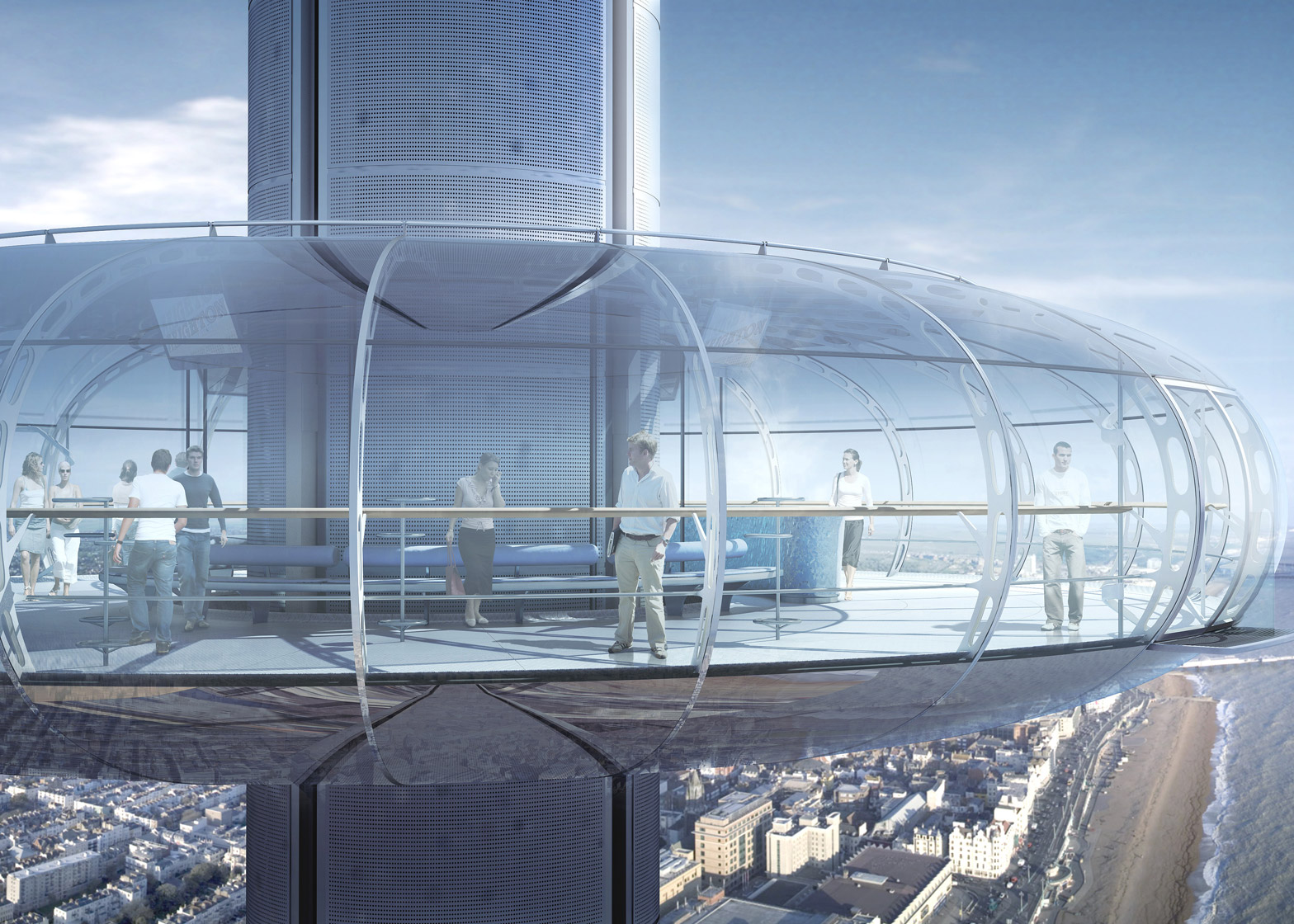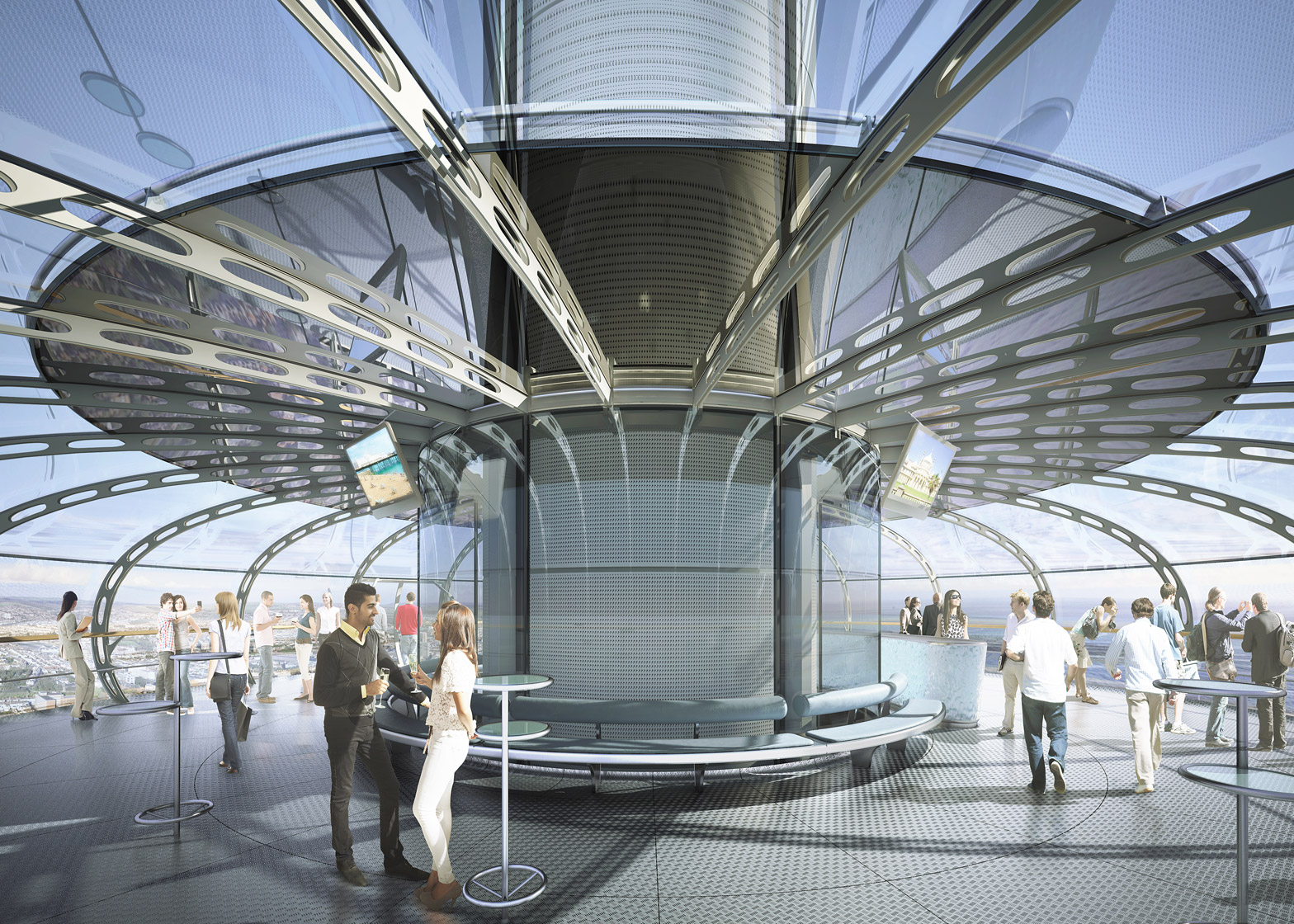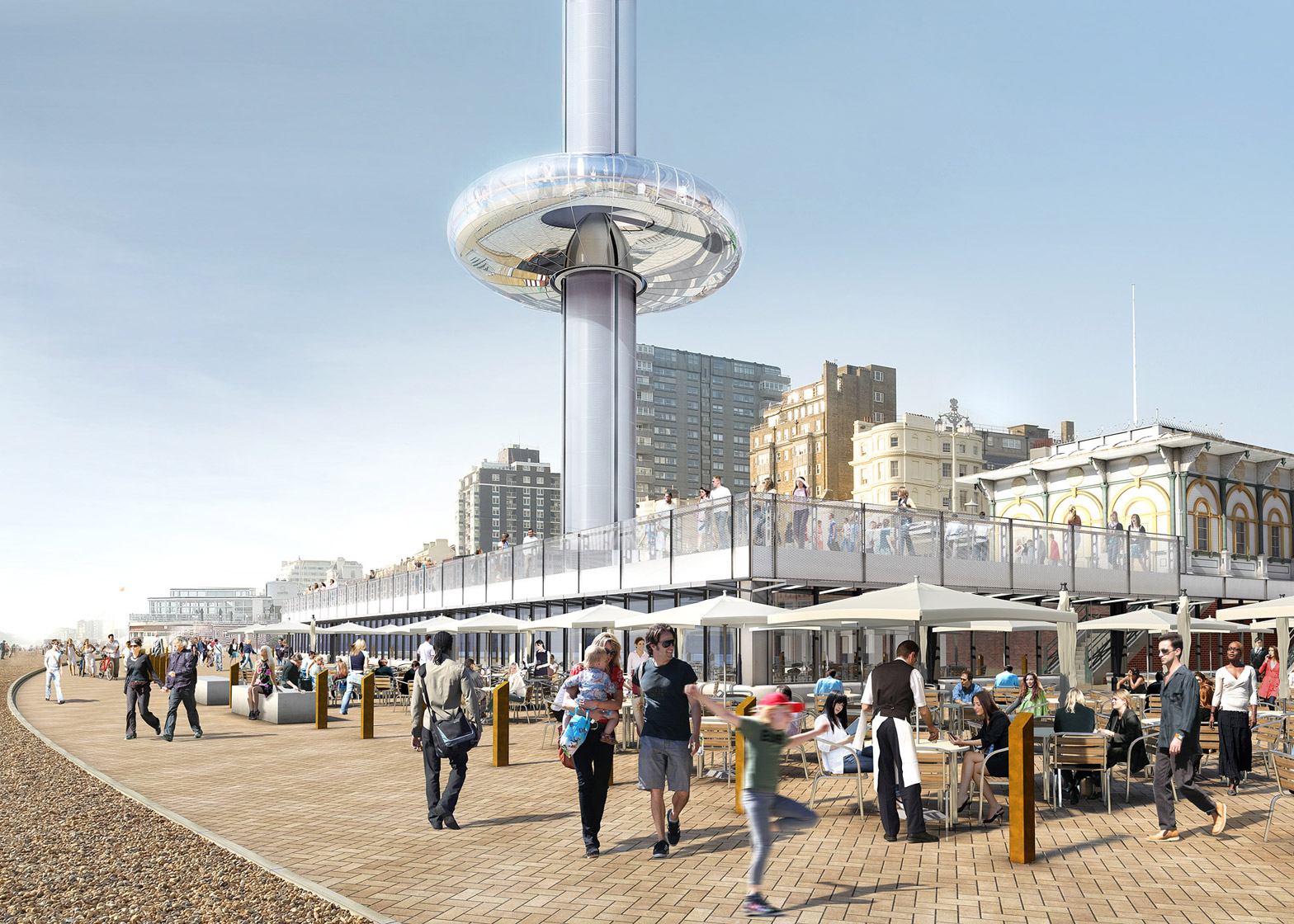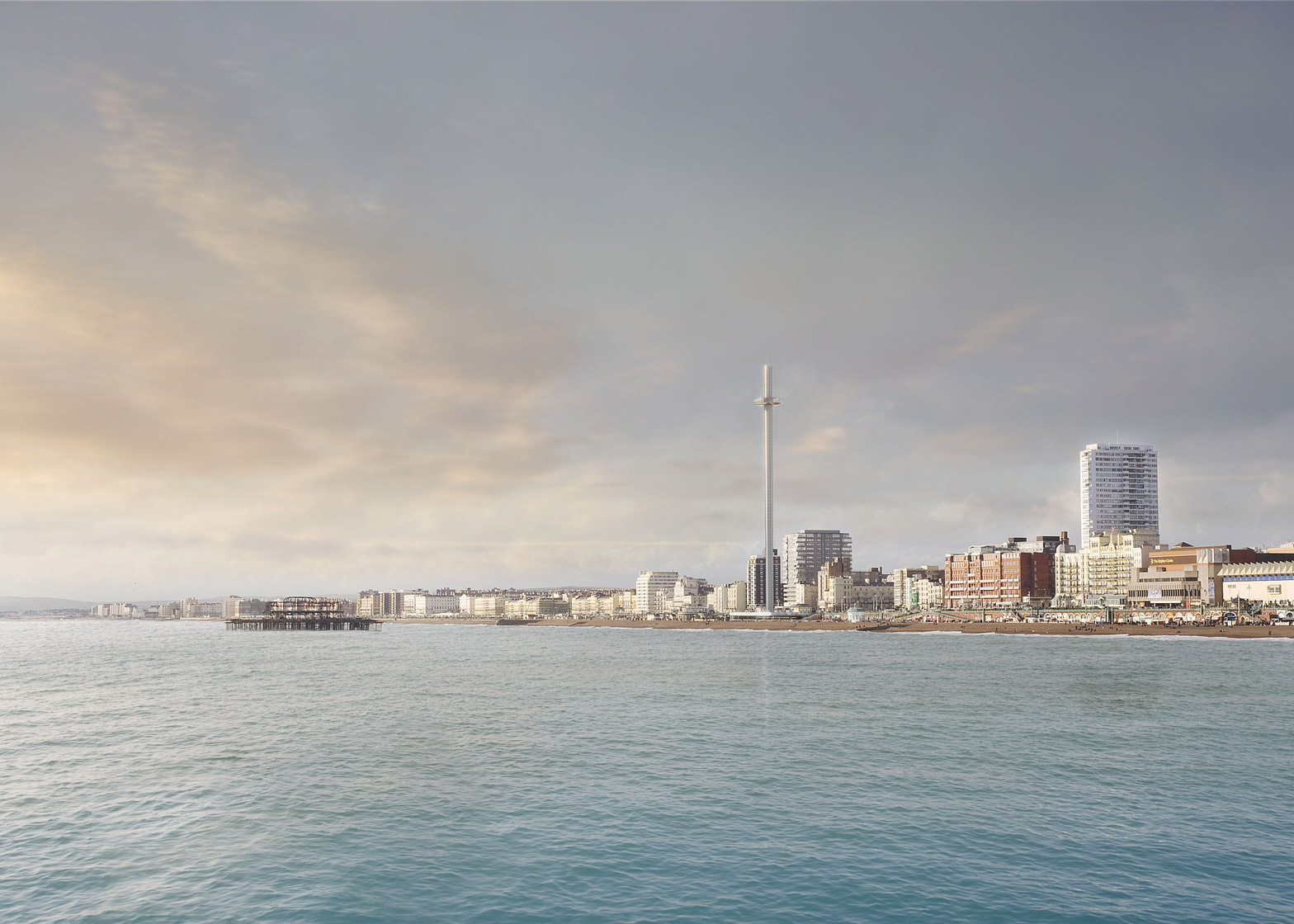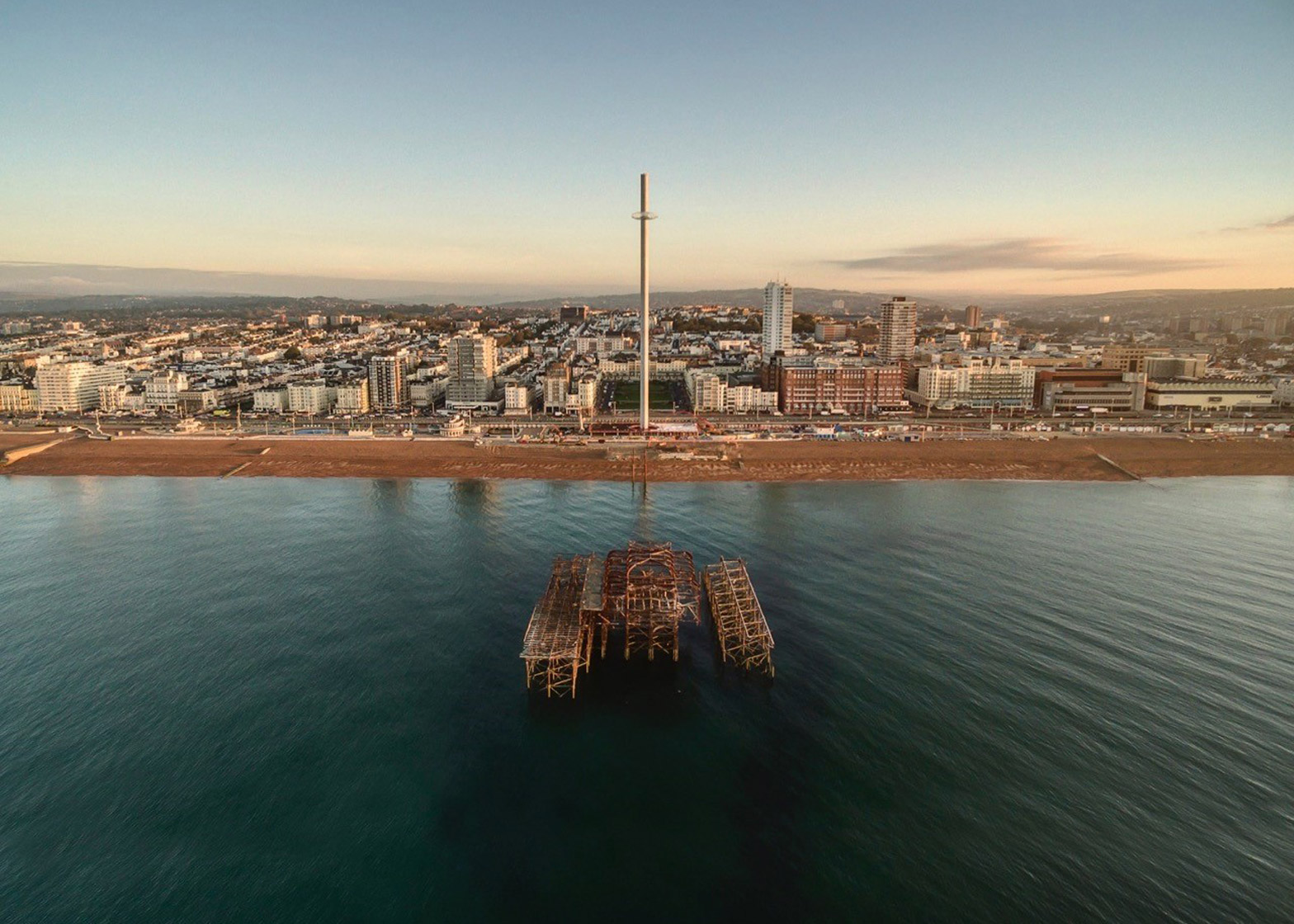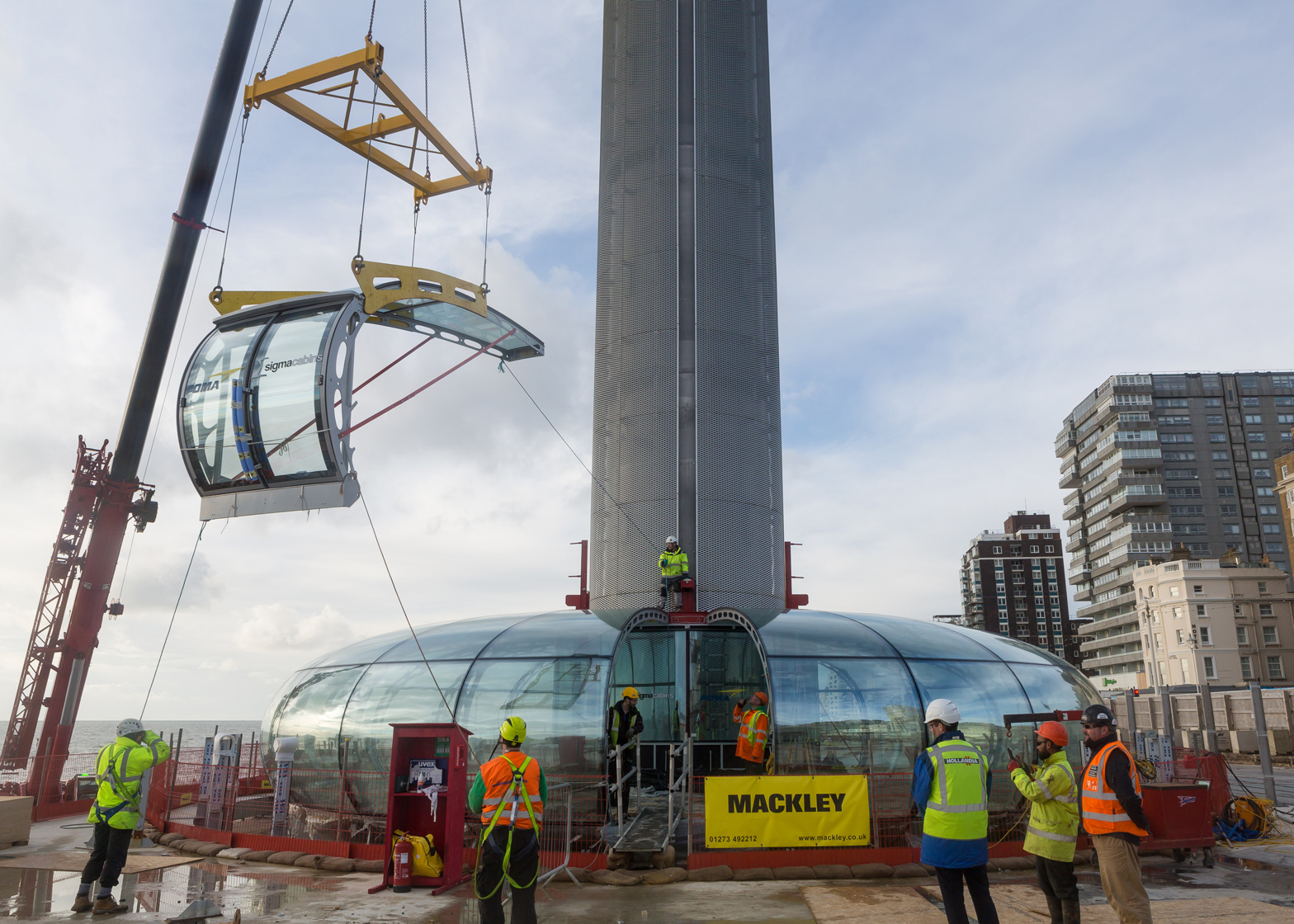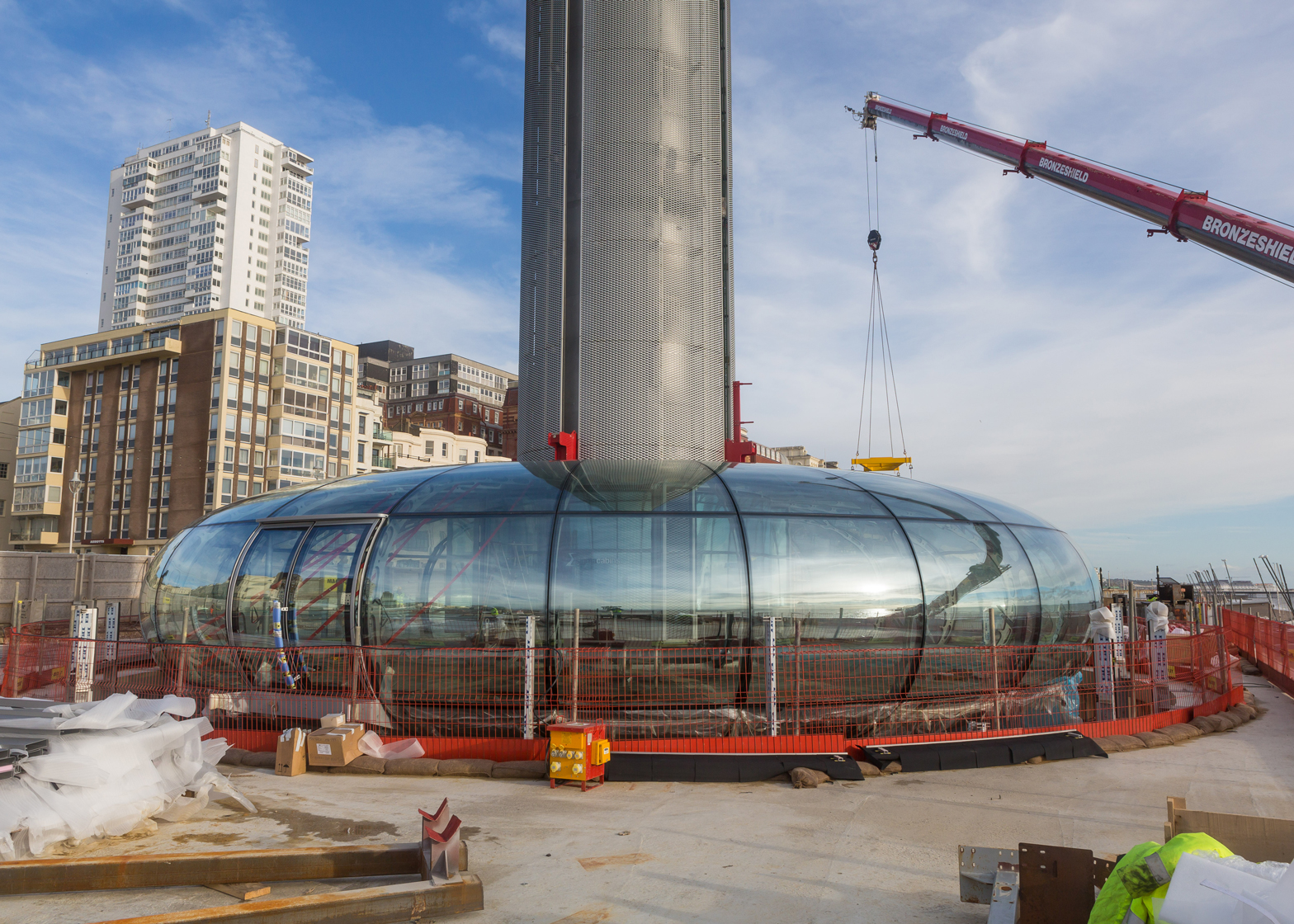London Eye designer Marks Barfield Architects has reached the final stage in its construction of the UK's highest observation tower outside the capital (+ slideshow).
Billed as the world's first vertical cable, the British Airways i360 is a slender tower featuring a glass viewing pod that will glide up and down to transport passengers to a height of 138 metres.
It is being built beside the beach in Brighton, and will offer views across the town's rooftops, the English Channel and the coastal Sussex landscape – up to 26 miles in all directions.
Construction of the glass viewing pod completed last week. This enclosure is 10 times bigger than the capsules of the London Eye and is expected to hold up to 200 people at a time.
"The pod is completed and it looks stunning," said Julia Barfield, one of the two co-founders of Marks Barfield Architects.
"The fluid form of the glass sits beautifully in its beachfront setting and the mirrored underside will cast reflections of the naturally shifting shapes of the sea and sky."
The 18-metre-wide pod, its drive mechanism and its control system are being built by French lift specialist Poma, which was also behind the London Eye's capsules.
The team is expecting to start "test flights" of the pod in spring, ahead of an opening date in the summer.
"The team from Poma have done a remarkable job, both in terms of the craftsmanship of the handmade pod as well their skillful and swift assembly," added David Marks, who partners with Barfield.
The tower has an overall height of 162 metres. It is situated in alignment with the derelict West Pier to the south and Regency Square to the north, and is visible from key points within the town.
Plans for i360 was first drawn up in 2005, but the project stalled in 2008 as a result of the global financial crisis. It was revived in 2014 by the local council, majority-funded by a loan from the UK's debt management office.
Tickets to enter the pod will cost £15 for adults and £7.50 for children. There will also be a restaurant at the tower's base, offering locally sourced food to up to 400 diners at a time.
Marks Barfield Architects completed the London Eye in 2000 to coincide with the Millennium, and it set the precedent for a series of similar projects around the world, including the Singapore Flyer and China's Star of Nanchang.
Other projects by Marks Barfield include an elevated walkway through the trees of Kew Gardens and a proposed research centre for the Amazon Jungle with a bulging bamboo observation tower and over six miles of treetop bridges.
Renderings are by F10 Studios.

